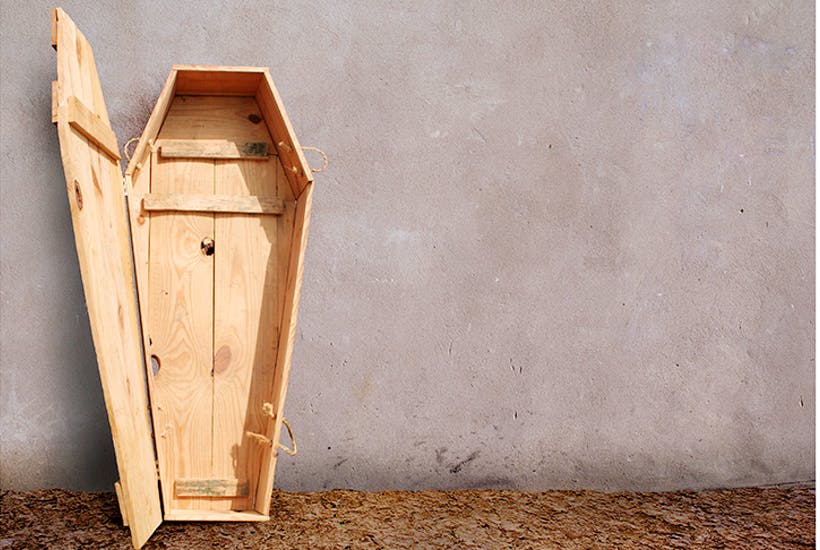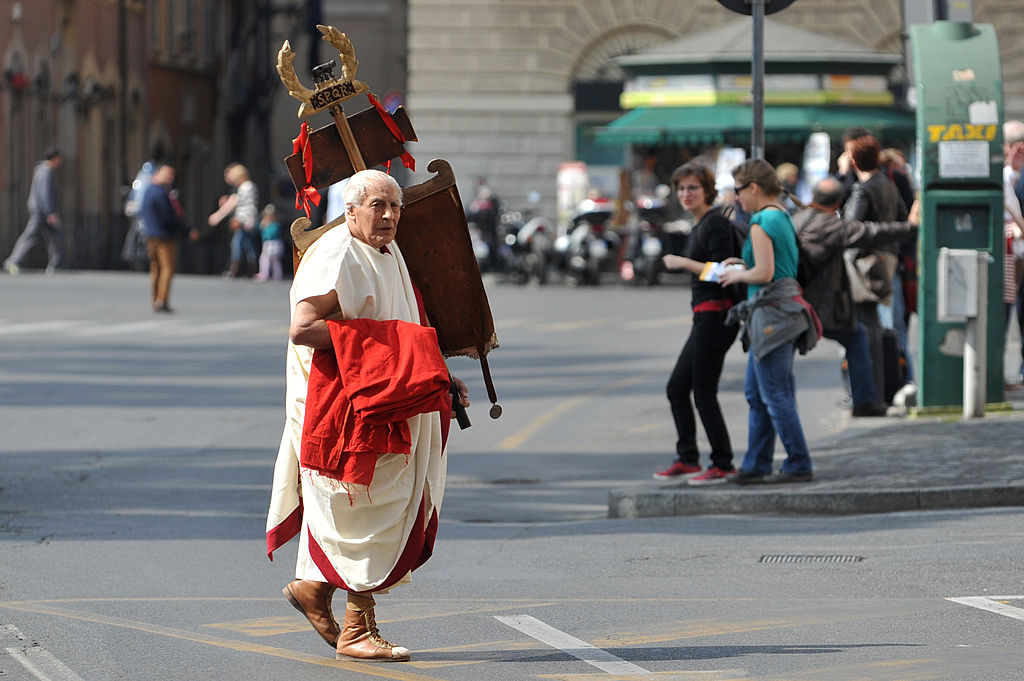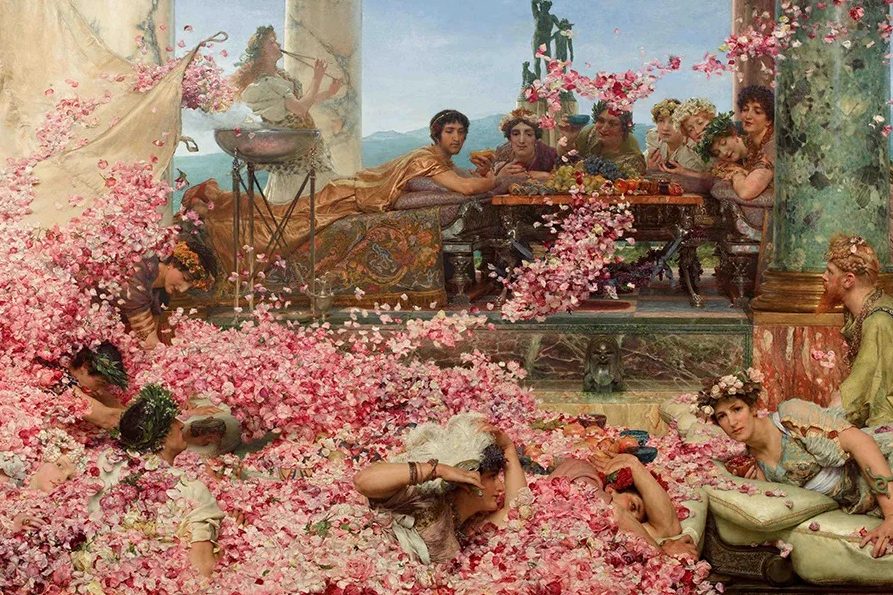Today’s funerals, featuring black hearses and black suits, lack (we are assured) ‘emotional intelligence’. Colorful coffins featuring pictures of favorite musicians, leopard-print hearses and burials in yurts will apparently correct this sad deficiency. The Romans might well have disagreed.
Cremation and interment took place outside the boundaries of Rome (dead bodies were considered a polluting force — contrast the Christian view). The less well-off could for a fee join funerary clubs, meeting regularly to dine together, and have a niche in a highly decorated underground chamber reserved for the urns containing their ashes. Those wealthy enough to afford funerary monuments, featuring lengthy epitaphs and portraits, built them alongside the roads into the city, many with seats and dining areas for the tired traveler to rest and admire the success, as well as the thoughtfulness, of the family that provided them.
The elites went one better. There was a tradition of preserving death masks (imagines) of the departed, complete with lists of achievements, to be displayed in the main reception area of the family home. When a family member died, the body would be accompanied not only by huge crowds, but also by actors wearing the family imagines. These were impersonating the dead man and his famous ancestors, all of whose great exploits would be celebrated by the public eulogist in the forum. The effect on the crowds must have been extraordinary. As the historian Polybius observed: ‘By this regularly renewed celebration of brave men, the fame of those who have done great things is immortalized, and the renown of those who have served their country well becomes common knowledge and passed down to posterity.’
And that was the point: all those ceremonies and monuments suggest a powerful desire on the part of Romans to project themselves publicly as families whose present loss was to be understood in the context of their past and implied future: dedication to the Roman state and its gods. Now that is emotional intelligence
This article is in The Spectator’s January 2020 US edition.

























